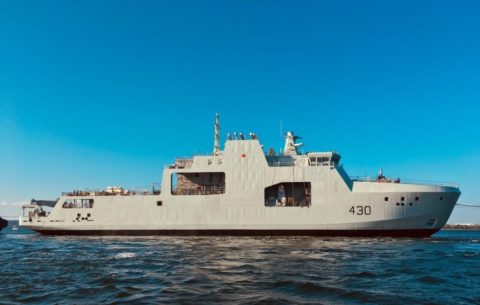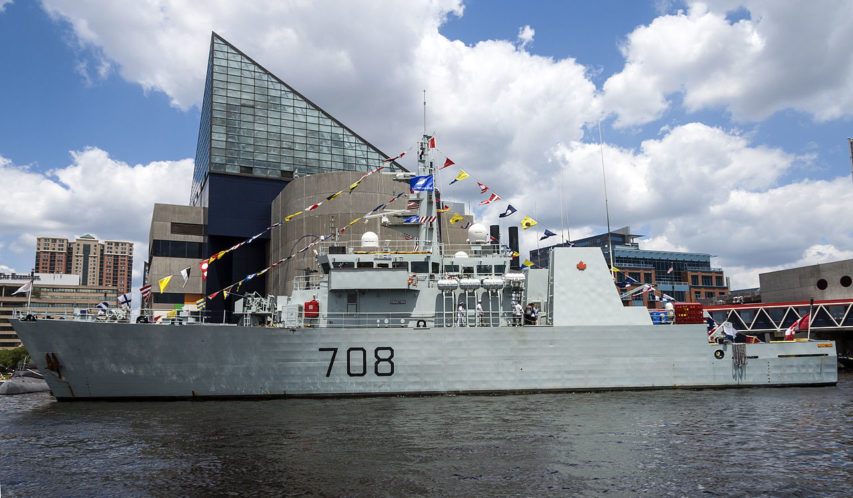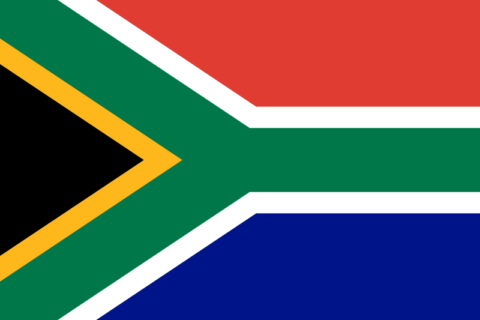I admit that I doubted the overall utility of the Harry DeWolf-class of Arctic/Offshore Patrol Ships when they were announced, but aside from the typical teething troubles of new ship designs they seem to be doing a good job at their initial taskings. Noah, on the other hand, proudly describes himself as “perhaps their [the AOPS] biggest online defender“, but he’s raising concerns that the Harry DeWolf class will soon be expected to pick up the slack as the Kingston-class Maritime Coastal Defence Vessels come to the end of their working lives with no obvious replacements under construction:

Arctic Offshore Patrol Ship HMCS Harry DeWolf shortly after launch in 2018. The ship was commissioned into the Royal Canadian Navy in June, 2021.
It’s a common fact that I love the AOPS.
I am perhaps their biggest online defender, despite the hate, the early issues, and the slander. They, to me, are the perfect vessel for what we require up North, modular, flexible, with a whole world’s of potential.
The six vessels that make up the DeWolfe-class have kept themselves busy, so busy that you often forget that they are, primarily, Arctic vessels. Now that isn’t to say they can’t take other tasks, nor should they be limited.
OP CARRIBE, a trip to Antarctica, hosts of exercises. The AOPS manage to be kept busy, while still finding time for trips up North, although not nearly as much as many would seem to like.
Their ability to hold containerized payloads has also seen them used as testbeds for various capabilities, including towed arrays for ASW, submarine rescue equipment, and in the future, RMDS and unmanned systems like Cellula Robotics’ Guardian AUV.
Indeed, the AOPS are slowly, though surely coming into their own. Yet it is those things it does well, that potential, that puts them in the spotlight among a fleet that is aging and soon set to dwindle in numbers over the next decade.
The looming writing off of the Kingston-class is coming faster and faster everyday, and soon, they will be gone. The little workhorses, whom performed far more than anyone could have asked of them.
The Kingston-class Maritime Coastal Defence Vessel (MCDV) HMCS Moncton in Baltimore harbour for Sailabration 2012.
Photo by Acroterion via Wikimedia Commons.The Kingstons have been a backbone, beyond the littoral-patrolling minesweeper they were envisioned as when the MCDV project was first stood up.
Yet the Kingstons as we know them are to be retired with no true replacement, their original tasks overtaken by other systems and automation.
Their original replacement, as part of the OPV project has evolved into the Canadian Multi-Mission Corvette, a vessel envisioned to one day be a true second-line combatant to complement the River-class destroyers.
Instead the tasks of the Kingstons shall fall onto the small number of AOPS in service. They will be tasked, not only to fulfill their role as Arctic Patrol ships, but now take the mantle of fulfilling a host of growing secondary tasks that has been filled by these cheaper, smaller vessels.
Add on a Halifax-class that is struggling to stay afloat, bouncing around various states of condition and expected to keep sailing for another decade. Even as the River enter service, the tasks of the Kingstons will not be filled by them.
It’s a lot of strain and demand to put on vessels that are not only significantly larger than the Kingstons, but also significantly more expensive to operate on fulfilling tasks like OP CARRIBE, where while they may be very valuable assets, might not be optimal in lieu of smaller vessels that can easily fill the same role just as efficiently.
On that note it also can’t be understated that the more we put on the AOPS, the more we take it away from its Arctic taskings, and the more we expect of these six vessels to do almost every secondary task, the more we create gaps in our continental defence.
Six AOPS not only for Arctic Patrol, but MCM, Submarine Support, Seabed Warfare, things like OP CARRIBE … How can we expect these vessels to remain in service for the next quarter-century with all this strain?
We don’t talk about these vulnerabilities a lot, but as it stands Canada is severely vulnerable to adversaries and foreign actors ability to leverage asymmetric methods to limit our ability to respond abroad and severely harm Canada’s strategic infrastructure.






